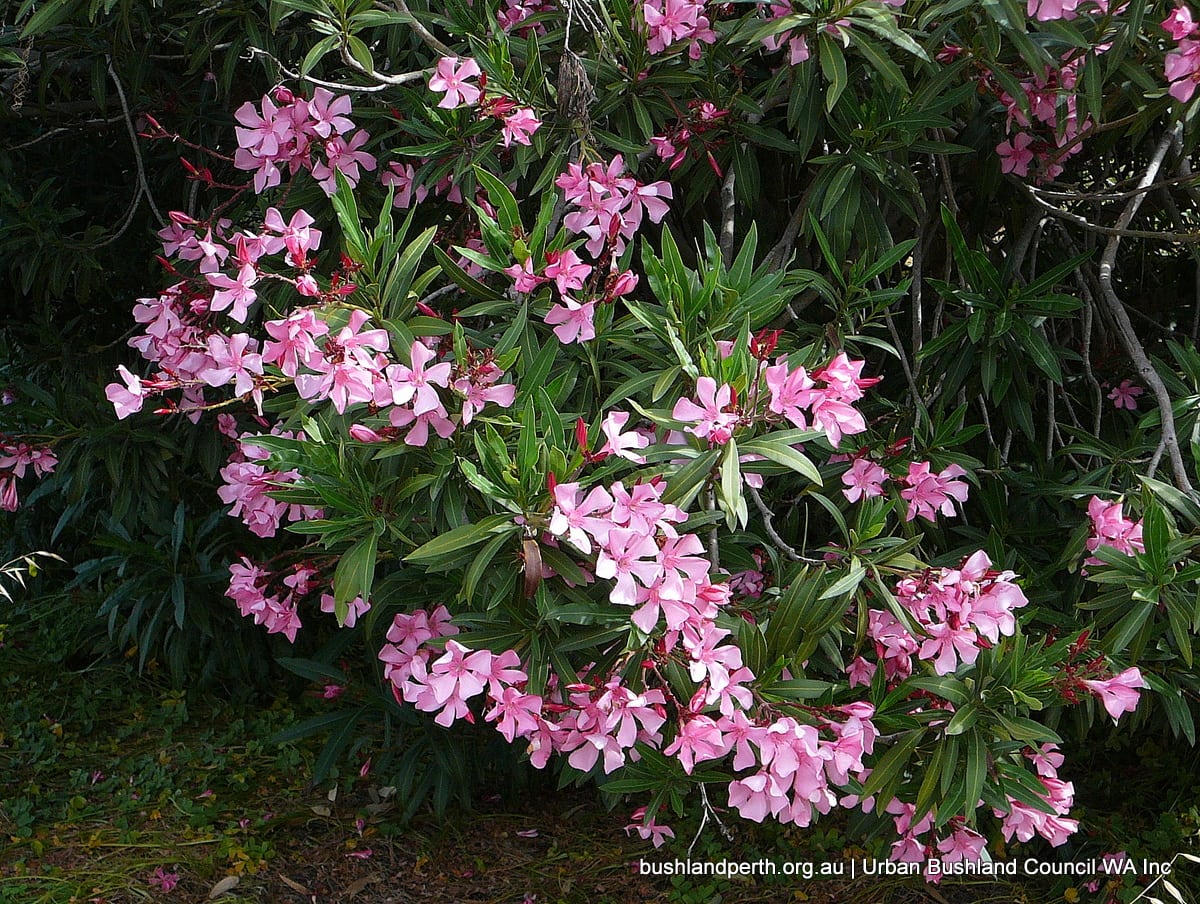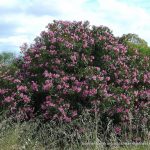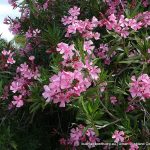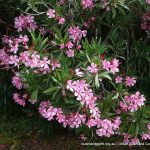Pink Oleander

Common name
Pink Oleander
Scientific Name
Nerium oleander
Type of plant
Tree And Shrub Weeds
About this weed
Oleanders are large perennial shrubs or trees with red, pink or white flowers in summer. It is so widely cultivated that no precise region of origin has been identified, though southwest Asia has been suggested. This garden escapee has now become a problem mainly through the dumping of garden rubbish in bushland. Oleander is one of the most poisonous commonly grown garden plants.
Description
Oleanders are a small spreading tree or shrub but can under some circumstances grow to about 5 metres high. The dark-green leaves are thick and leathery and narrowly lanceolate. Their erect stems splay outwards as they mature. It is a vigorous grower in warm subtropical regions although it can tolerate cooler climates. In summer Oleanders produce masses of red, pink and cream flowers. Oleander has historically been considered a poisonous plant because some of its compounds may exhibit toxicity, especially to animals, when consumed in large amounts.
Impact on Bushland
If left may spread over bushland and impact on ecological processes and plant communities.
Location
Scattered along the edge of rivers, and at the base of limestone cliffs.
Priority for removal
Low: as it causes minimal disruption to ecological processes or loss of biodiversity.
Management (hand)
Care should be taken when removing Oleanders from bushland as all parts of the plant are toxic.
Management (herbicide)
Not available.
Flowering month/s
January, February, December
Flower colour/s
Red, Pink, White
Information source
https://florabase.dpaw.wa.gov.au/browse/profile/18356 and
https://en.wikipedia.org/wiki/Nerium
Additional information
https://florabase.dpaw.wa.gov.au/weeds/swanweeds/



